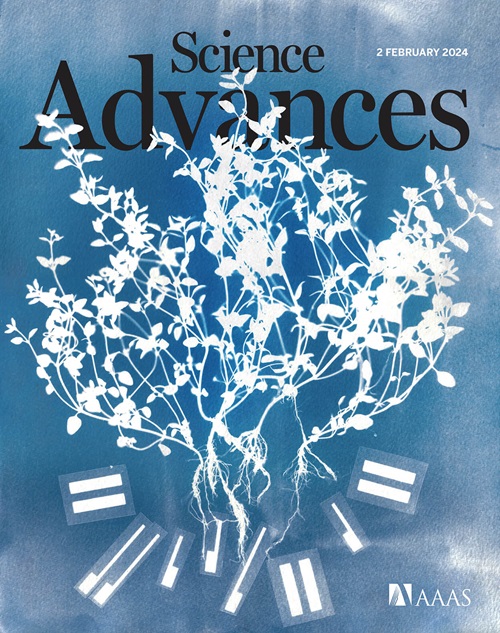Perturbed cell fate decision by schizophrenia-associated AS3MTd2d3 isoform during corticogenesis
IF 11.7
1区 综合性期刊
Q1 MULTIDISCIPLINARY SCIENCES
引用次数: 0
Abstract
The neurodevelopmental theory of schizophrenia emphasizes early brain development in its etiology. Genome-wide association studies have linked schizophrenia to genetic variations of AS3MT (arsenite methyltransferase) gene, particularly the increased expression of AS3MTd2d3 isoform. To investigate the biological basis of this association with schizophrenia pathophysiology, we established a transgenic mouse model (AS3MTd2d3-Tg) ectopically expressing AS3MTd2d3 at the cortical neural stem cells. AS3MTd2d3-Tg mice exhibited enlarged ventricles and deficits in sensorimotor gating and sociability. Single-cell and single-nucleus RNA sequencing analyses of AS3MTd2d3-Tg brains revealed cell fate imbalances and altered excitatory neuron composition. AS3MTd2d3 localized to centrosome, disrupting mitotic spindle orientation and differentiation in developing neocortex and organoids, in part through NPM1 (Nucleophosmin 1). The structural analysis identified that hydrophobic residues exposed in AS3MTd2d3 are critical for its pathogenic function. Therefore, our findings may help to explain the early pathological features of schizophrenia.

求助全文
约1分钟内获得全文
求助全文
来源期刊

Science Advances
综合性期刊-综合性期刊
CiteScore
21.40
自引率
1.50%
发文量
1937
审稿时长
29 weeks
期刊介绍:
Science Advances, an open-access journal by AAAS, publishes impactful research in diverse scientific areas. It aims for fair, fast, and expert peer review, providing freely accessible research to readers. Led by distinguished scientists, the journal supports AAAS's mission by extending Science magazine's capacity to identify and promote significant advances. Evolving digital publishing technologies play a crucial role in advancing AAAS's global mission for science communication and benefitting humankind.
 求助内容:
求助内容: 应助结果提醒方式:
应助结果提醒方式:


